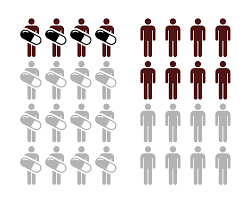
Using probability in public health practice
Order Instructions:
Description and original example of how probability is used in public health practice. Then, explain why using statistics and probabilities derived from a population (as is the practice in public health) could cause problems when applied to individuals in a clinical setting. Finally, differentiate between the focus of clinical practices, such as those of a therapist, pharmacist, RN, or MD, and the focus of public health practitioners. How can probability be applied in public health?
SAMPLE ANSWER
Using probability in public health practice
Probabilities are basically understood as the numbers which reflect the chance that a certain event will take place. Probability is used in public health practice by making inferences or generalizations regarding unknown population parameters (Nikulin, Commenges & Huber, 2009). When a sample from the population of interest has been selected, the characteristic being studied is measured. This characteristic in the sample is then summarized and then inferences would be made about the population basing upon what was observed in the sample. For example, researchers can conduct a study to explore the prevalence of trichomoniasis, also known as T. vaginalis infection which a widespread and curable sexually transmitted disease (STD). The study can be done for a period of 3 years amongst a probability sample of young adults, N= 3,000 in Madison, Wisconsin. From the results obtained from the sample, inferences would be made about the prevalence of trichomoniasis in the general population in the state of Wisconsin and/or the entire United States.
Using statistics and probabilities obtained from a population can cause problems whenever applied to patients in a hospital setting primarily because the public health professionals obtain their results by studying large numbers of patients and their results cannot be used in the clinical setting for a specific individual patient. For instance, public health practitioners make a number of declarations such as: the 6-year survival rate for stage one cervical cancer is 87% in the United States. Public health professionals calculated this figure by observing large numbers of women who were diagnosed with stage one cervical cancer. They then divided the number of survivors at 6 years by the number of those diagnosed. This will allow public health practitioners to compare to survival rates of the other sorts of cancers. Nonetheless, it is not useful in predicting a particular patient’s likelihood of survival for 6 years (Nikulin, Commenges & Huber, 2009).
The focus of public health practitioners is to protect the health of everyone in the community or entire populations; a community could be a town, a state, a neighborhood or even the whole country. Public health practitioners improve and protect the health of communities by means of education, research for injury and disease prevention and promoting healthy lifestyles. Conversely, clinical professionals focus chiefly on treating individuals when they have become injured or ill (Nikulin, Commenges & Huber, 2009).
Reference
Nikulin, M. S., Commenges, D., & Huber, C. (2009). Probability, Statistics and Modelling in Public Health. Cleveland, OH: Springer Publishers.
We can write this or a similar paper for you! Simply fill the order form!




